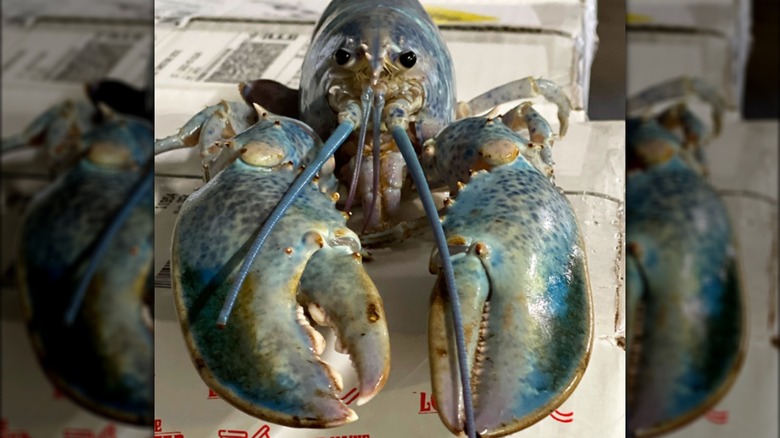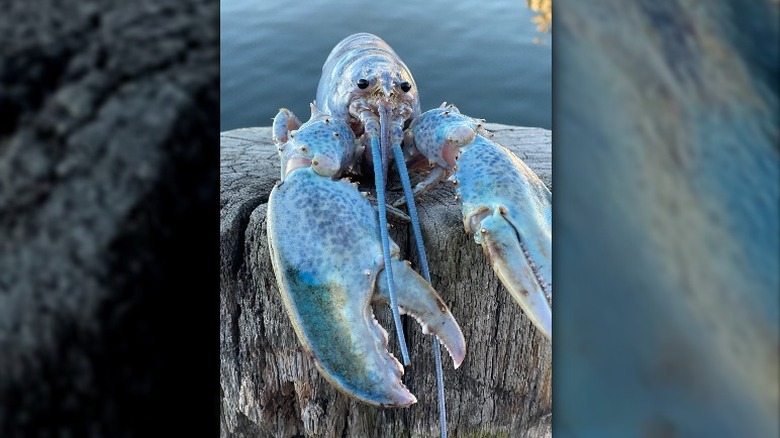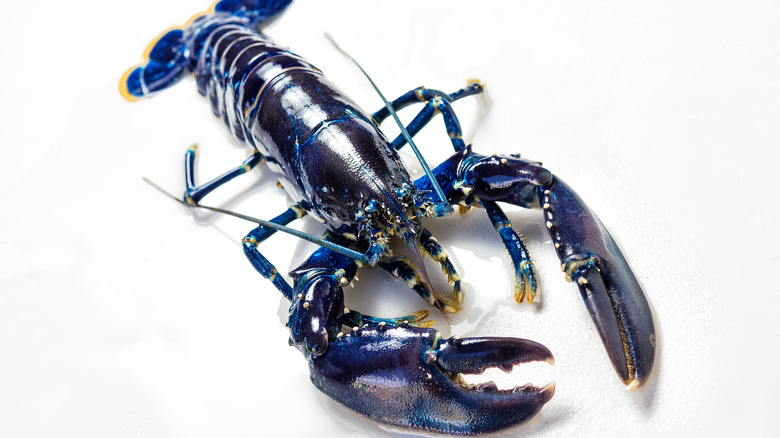Even Rarer Than A Blue Lobster Is This One That's Named After A Sweet Treat
Not exactly what many would classify as cute and cuddly, lobsters are (to humans, anyway) just plain strange-looking creatures. Some of these invertebrates have large claws, while others have long antennae. One special fact about lobsters is that they never stop growing and can reach lengths of up to three feet long. Lobsters can also be yellow, white, and even blue, according to OneKindPlanet.
Finding one of the rare-colored lobsters is unusual, but it happens. For instance, in 2016, Canadian fishermen caught a rare blue lobster, the BBC reports. In 2017, a lobsterman caught a translucent lobster that looked almost iridescent, per Boston.com. More recently, lobsterman Bill Coppersmith discovered what is being called a one-in-100-million lobster off of the coasts of Maine when he checked his lobster traps in November of 2021. And he knew the moment he saw it he had pulled up something rare from the ocean (via NPR).
The lobster is a blend of pink and blue
What makes this lobster unique is that it's not just one color, its shell is shades of iridescent pink and blue — the color of cotton candy. And it's something to marvel at. "It's right up there with the 'Mona Lisa' — priceless," Coppersmith tells NPR. The lobster, which Coppersmith named after his daughter, Haddie, is what Mark Murrell, founder, CEO, and Chief Curator of Get Maine Lobster, called "amazing." "If you rotate her in the light it's like a gem," he tells NPR, adding that looking at the lobster is like looking at a beautiful gem. "Her shell is like the inside of an oyster — it's pearlish," he explains (via Boston.com).
Haddie is such a rare find that she has a home at the Seacoast Science Center in New Hampshire. Rob Royer, senior aquarist at the organization tells NPR that Haddie is doing well. She even has a Twitter page to keep fans updated on how she is doing.
What makes lobsters different colors?
Pigments give lobsters their color. Dr. Michael Tlusty explains to Britannica that astaxanthin is a red pigment lobsters consume that gives their shells a reddish color. As the pigment moves from the lobster skin to the shell, proteins attach to it, causing it to twist or bend, and that can change the color to a blue or yellow. Some lobsters have more of these proteins, while others have less, explaining the diversity of colors.
Sometimes, different lobster colors may be the result of a genetic abnormality — their bodies are deficient in certain proteins that bind to the pigments. For example, blue lobsters don't have blue pigments. Haddie is missing not only blue proteins, but others that result in a shell that appears to be a gradient of pink and blue, like cotton candy (via NPR). These mutations can even result in the not-so-uncommon two-tone lobsters that pop up in Maine every year, according to National Geographic.


